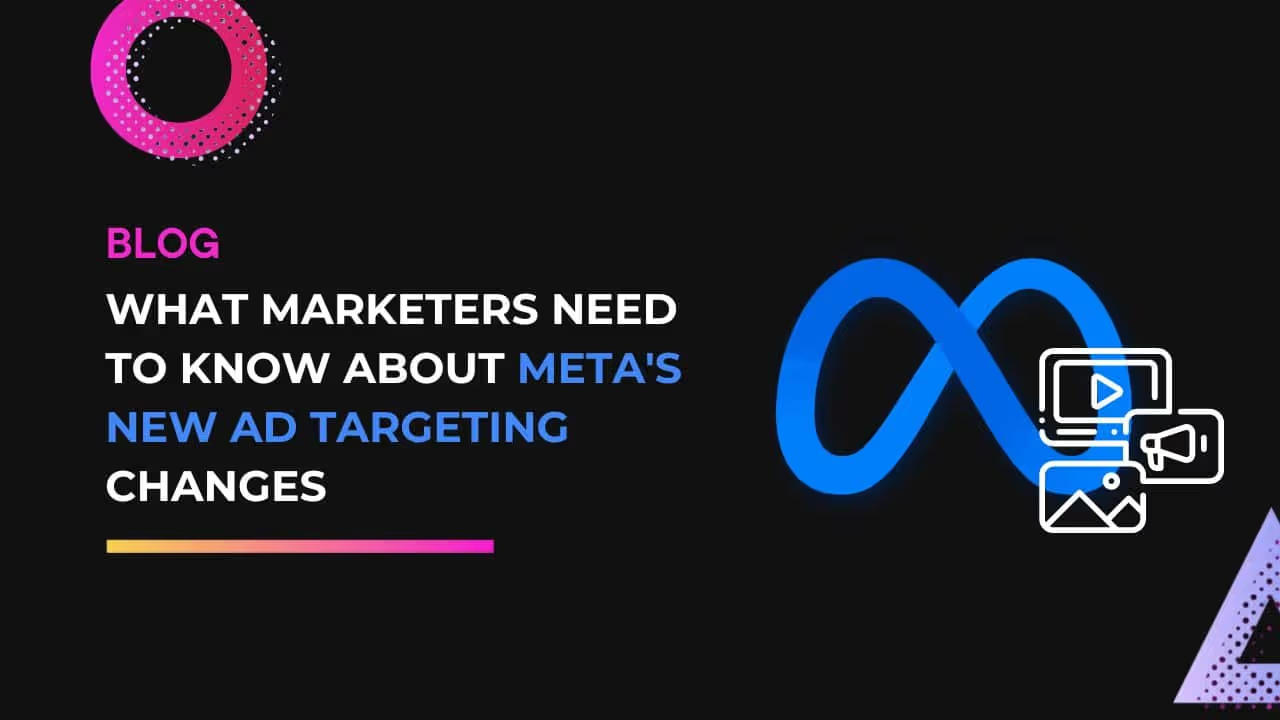The ad targeting changes of Meta have recently altered how advertisers can approach audience segmentation on their platform. Meta’s ad targeting changes have removed the option to exclude detailed targeting, which could significantly impact how marketers design and manage their ad campaigns. Here’s an overview of these ad targeting changes, their implications, and strategies to adapt.
Ad Targeting Changes in Meta's Advertising Platform
Previously, Meta allowed advertisers to exclude specific groups from seeing their ads. For example, if you were promoting a fitness product, you might exclude people interested in unrelated topics like cooking. This helped make sure your ad was seen by the most relevant audience.
Now Meta has specifically removed the ability to exclude audiences based on detailed targeting options, making these ad targeting changes significant for all advertisers. These changes include:
- Demographic Information: Age, gender, and household income.
- Interests and Behaviors: Hobbies, past purchase behavior, and device usage.
- Connection Type: Friends of people who like your page, app users, or event attendees.

This change has been made as part of its ongoing efforts to enhance privacy and reduce the potential misuse of its targeting features, which could lead to discriminatory practices. By eliminating detailed targeting exclusions, Meta aims to create a more inclusive advertising environment and comply with increasing regulatory scrutiny regarding data privacy and discrimination.
It means you can no longer exclude people based on detailed interests or behaviors. Instead, you’ll need to focus on more positive targeting strategies, like including the right audience rather than excluding the wrong one.
Why This Update Matters?
- More Focus on Inclusion: Without the ability to exclude, you’ll need to be more precise about who you include in your targeting. These ad targeting changes mean that you must spend more time defining your ideal audience and understanding their interests and behaviors.
- Potentially Broader Reach: Since you can’t exclude as many groups, your ads might be shown to a larger, more diverse audience. This could be an opportunity to reach people you might not have considered before, but it also means your ad spend might reach less relevant viewers.
- Increased Importance of Ad Content: With a broader audience, the content of your ads becomes even more crucial. You’ll need to create ads that appeal to a wide range of people and make sure your messaging resonates with as many potential customers as possible.
- Adjust Your Budget and Strategy: This change might affect how you allocate your ad budget. You might need to experiment with different targeting options and ad formats to see what works best without the exclusion feature.

What Should Marketers Do?
- Refine Audience Targeting: Use Meta’s tools to refine your audience by including characteristics and interests that align with your target market. Spend time understanding your audience and how they use the platform.
- Test and Optimize: Since you can no longer exclude groups, it’s important to test different ads and strategies. Use A/B testing to find out which ads perform best and make adjustments based on the results.
- Focus on Creative and Messaging: Craft ad content that appeals to a broad audience while still conveying your message clearly. High-quality, engaging content will help you stand out and attract the right viewers.
- Monitor Performance: Keep a close eye on your ad performance metrics. Track how your ads are performing with the new targeting limitations and be ready to pivot your strategy if needed.
This is where Dataslayer can help you. Our platform provides robust analytics tools that help you track and analyze your ad performance in real-time. With Dataslayer, you can easily identify trends, measure ROI, and make data-driven decisions to optimize your campaigns effectively.
Implementation Timeline
Meta has begun rolling out these ad targeting changes, and they are expected to be fully implemented by the end of the year. Advertisers should start preparing for this shift immediately to ensure their campaigns continue to perform effectively.
In summary, Meta’s removal of detailed targeting exclusions means marketers need to adapt their strategies. By focusing on refining audience inclusion, optimizing ad content, and monitoring performance, you can navigate this change effectively and continue to achieve your advertising goals.







